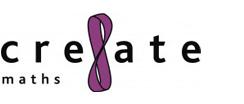Algebraic modelling
Students need to appreciate the power algebra holds when required to model a situation mathematically in order to understand the situation and to predict what will happen when changes are made. This resource list contains a variety of activities in which students are required to model simple contextual and subject-based problems algebraically.
Visit the secondary mathematics webpage to access all lists.
- ALL
- Teacher guidance
- Textbook
- Experiment
- Activity sheet
Teacher guidance
Keeping the Pizza Hot
This activity requires students to consider the problem of maximising the market available to a pizza shop through the ability to keep a home-delivered pizza warm for longer. Students use a mathematical model to explore the issue that a pizza home delivery business faces in ensuring that the pizza arrives hot! They use mathematical modelling to explore cooling curves for pizzas in different packaging. The model is then used to address the marketing problem faced by the pizza shop.
Students are expected to represent and analyse the problem, including simplifying where needed. The emphasis is on interpreting and evaluating the mathematical models produced and relating them to the original problem in order to improve upon them.
In solving the problem students may use linear equations, formulae analytical, graphical and numerical methods for solving equations and polynomial graphs, units, compound measures and conversions, apply the handling data cycle and use an algebraic interpretation of the real data collected rather than a statistical one.
Textbook
Task Maths 3
This resource contains seventeen tasks. There are useful sets of review exercises after every three tasks and revision exercises. The tasks appropriate to this topic are:
4. The answer is 4t+2: Students represent simple algebraic formula in a range of ways using practical equipment.
6. Find the number - Students explore a variety of number puzzles and games of strategy which lead to the use of algebra.
Experiment
Making Molecules
In this resource students investigate the structure of hydrocarbons. Molecules which have the same chemical formula but a different structure are called isomers. A printed sheet representing carbon and hydrogen atoms is cut up and used, as a kinaesthetic exercise, for students to build as many isomers as they can for two chemical formulae.
Students are then challenged to discover a 3-D shape with 60 vertices, made from regular pentagons and hexagons. Teachers may choose to give 12 pentagons and 20 hexagons to groups of students for them to build the model or make up the shape from its net.
Topics such as number patterns, simple algebra, reflection and rotation are included in this resource.
Activity sheet
Heptathlon
The scoring system used for the heptathlon event is the focus of this resource. Students are provided with athlete's individual results from the seven events that make up the heptathlon. They then apply relevant formulae to the data and produce tables, or spreadsheets, which show individual scores for each athlete.
A detailed lesson plan supports the implementation of this activity, which is an example of functional mathematics, and has been designed to prompt class discussion and mathematical thinking.
Number and Algebra 2
This resource contains twelve units of work. The unit appropriate for this topic is:
Unit 12: Investigations and formulae in which students are presented with a number of pictures and contexts in which patterns have to be analysed and algebra used to generalise the situation with ample scope for students to relate the formula to the context.





